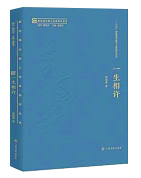Reviewing 40 years of the publishing industry in China

40 Years of Publishers’ Memoirs
40 Years of Publishers’ Memoirs, a 10 books series completed more than three years ago, consists of memoirs of 10 publishers, such as Nie Zhenning, former director of People’s Literature Publishing House, Huang Guorong, former deputy director of Kunlun Press, and Zhou Baiyi, former director of Changjiang Literature and Art Press.
Although there have been some biographies of publishers in China, the experiences of those publishers were mainly during the Republic of China era, and mostly written down by later generations. All the authors of this series entered the publishing industry after the reform and opening up. Most of them have experienced the whole process of China’s 40 years of reform and opening up. Therefore, these works can be regarded as the full record of 40 years of the publishing industry in China rather than only their personal growth in publishing.
The series proves the historical contribution of publishing to cultural heritage once again. As one of the world’s four great ancient civilizations, one critical reason why China has inherited its culture without interruption lies in language and records. The great publishing achievements of the past 40 years could not have happened without the support of publishers at the beginning of the reform and opening up.
In the past 40 years, China’s publishing industry, like other industries, has experienced a process of change from a planned economy to a market economy. The authors of this series have promoted and created a glorious publishing history in China as participants. For example, in Huang’s memoir A Lifetime Commitment, he wrote about how the Kunlun Press developed from scratch. In order to adapt to the transition from a planned economy to a market economy, the press explored its way step by step and formed a mature publishing model. Its establishment of the National Book Fair in particular made an epoch-making contribution to the Chinese book publishing industry. Value can also be found in the experience of the Changjiang Literature and Art Press based in Wuhan, which introduced new talent and established branches in Beijing. Its story is still told today among publishing insiders. These fresh personal experiences will undoubtedly become the epitome of the development history of the Chinese publishing industry.
These 10 memoirs have different writing styles, some of which are more literary compared to those with more historical materials. All these works are lively and concise and inherit the biographical style pioneered by Sima Qian, a historian in ancient China. For example, in Nie’s memoir My Days in No. 166, Chaoyangmen Inner Street, many chapters have a prosaic style. Wandering along the bank of the Lijiang River for more than 100 days before receiving official appointment, his depressed inner life is delineated in a subtle way, which mingles perfectly with the river scenery.
edited by YANG LANLAN
